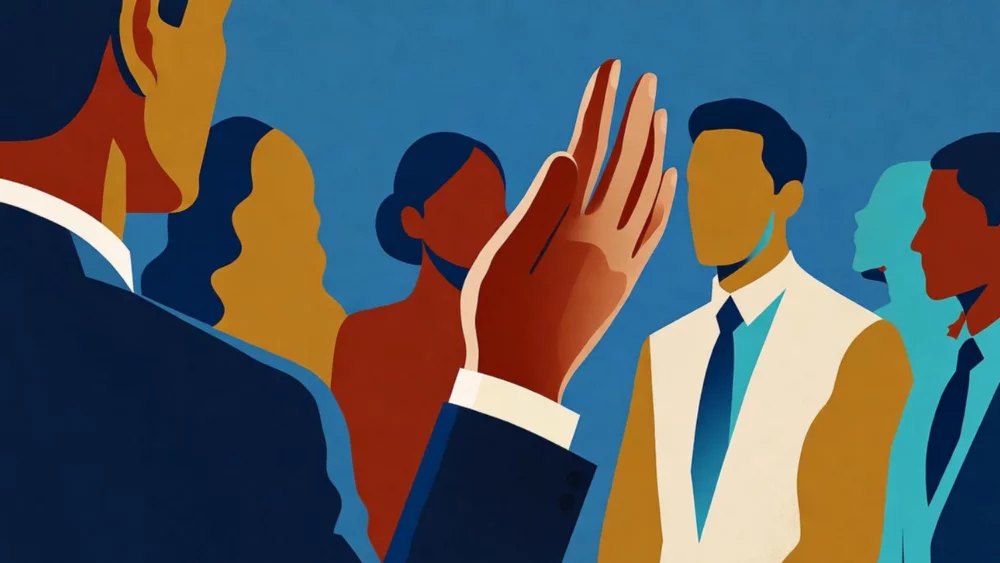In four months, she has accumulated nearly three million views on YouTube. After eight years spent in a production company, Charlotte Vautier now prefers the freedom of independent formats. “Might as well earn little on the Internet but be free, rather than earn little in the media with imposed topics,” explains the creator, who is approaching 100,000 subscribers on her channel “OK Charlotte.”
If these creators reach their audience, it is also because they meet a demand and occupy a space left vacant, in a context where, moreover, “only 32% of French people believe you can trust what the media say about major current affairs,” recalls Guillaume Caline, Director of Public Issues and Opinion at Verian. This further complicates the task for newsrooms in attracting younger audiences. “Hugo Décrypte now reaches a level of coverage comparable to, or even higher than, many traditional media outlets, according to the latest Reuters Institute report,” notes Alexandra Klinnik, media innovation journalist at Méta-Media, the collective blog of France Télévisions.
This success is obviously driven by changing consumption habits, with information being consumed on smartphones via shorter, direct, and personalized formats. Yet this rise is divisive: 53% of French people consider it problematic that, thanks to social networks, more and more non-journalists are disseminating information related to current events. Among those under 35, 51% think the opposite (2024 Verian - La Croix - La Poste study). “There is a very clear generational divide. Young people are more attracted to these new voices. It remains to be seen if this will last,” notes Guillaume Caline, who is also a sociologist.
Drawing Inspiration to Reclaim Audiences
Faced with these new faces of news, newsrooms have had no choice but to adapt. “These audience shifts push traditional media to integrate and be inspired by these formats,” observes Guillaume Caline. “You can no longer ignore the impact of these creators,” adds Alexandra Klinnik. “They know how to capture attention and make information accessible; taking inspiration from their codes is not degrading.”
Some concrete initiatives illustrate this desire for transformation: the show méta-Talk, launched by Méta-Media and broadcast on Twitch, reaches hard-to-reach audiences. The arrival of creator Gaspard G on France Inter or the broadcasting of Hugo Décrypte interviews on France Télévisions show an assumed rapprochement with these community logics and more direct formats.
For Alexandra Klinnik, these partnerships are not enough: “Journalists must create a sense of belonging. Everyone must feel their identity is reflected: women, youth, disadvantaged socio-economic classes… These are often the people who disconnect from the news. You must not only look at clicks or reading time, but understand their routines, their priorities, what matters to them daily.”
“Media outlets that do not invest in these spaces and do not define a clear angle risk losing the battle for attention,” estimates Antonin Marin, co-founder of “Le Crayon,” a debate channel followed by over a million people on social media. “I don’t think they have lost this battle at all,” nuances Charlotte Vautier. “Young people get their information on the Internet, but traditional media are also there, with more or less the new codes.”
These codes are characterized by greater freedom. On her channel “OK Charlotte,” the videographer’s formats are driven by humor, direct storytelling, and handheld vlog-style cameras. “There is more sincerity on YouTube: more behind-the-scenes, more time, more flexibility, and above all an immediate audience response. Which seems less disconnected to me.”
Training the Next Generation in New Formats
Some journalism schools are already taking this turn. “Our students show increasing interest in these new forms of writing,” observes Stéphanie Lebrun, director of the Centre de Formation des Journalistes (CFJ). The school has launched a “new visual writing” program to teach students how to produce formats designed for social media.
“Today, a report no longer lives alone. It must exist elsewhere: short clips, reels, variations… The same subject can live across several platforms. This requires versatility but also rigor,” insists Stéphanie Lebrun. However, she stresses this hybridization does not replace the foundation: “The basics of the profession remain the same: find information, verify it, prioritize it. Without this, you do not keep the promise of certified information.”
While some graduates choose independence, most still aim for traditional newsrooms that have taken the digital turn, from Le Monde’s video service to the pure player Konbini, and new formats at France Télévisions. “The difference lies in the ability to master these codes without abandoning the fundamentals,” emphasizes the school director, who also heads the documentary production company Babel Doc.
Charlotte Vautier claims the same standard on YouTube: “There is as much, if not more, information and immersion than in a traditional report. The difference is the form, which is more personal, more spontaneous.”
Adapting Without Blurring the Lines
But this adaptation is not without risks. “Unlike journalists, many creators operate without ethical frameworks or verification processes,” warns Alexandra Klinnik, citing a UNESCO study (Behind the Screens, 2024) according to which 62% of creators surveyed admit they do not always verify the truthfulness of what they publish.
In this context, the co-founders of “Le Crayon,” content creators, have just announced a partnership with ESJ Paris, to bring training closer to creators’ practices. Bought in November 2024 by a consortium of investors including Bernard Arnault, Vincent Bolloré, Rodolphe Saadé, and Pierre-Edouard Stérin, the institution, not recognized by the journalism profession, has declared its intention to “advance new ways of delivering clear and fair information on social networks.”
Guillaume Caline sums up the balance to be found: “Media must remain visible and accessible without blurring the markers. On social networks, journalists and creators sometimes appear at the same level, making the landscape more blurred for the public, who must be able to distinguish journalistic work from raw opinion.”








